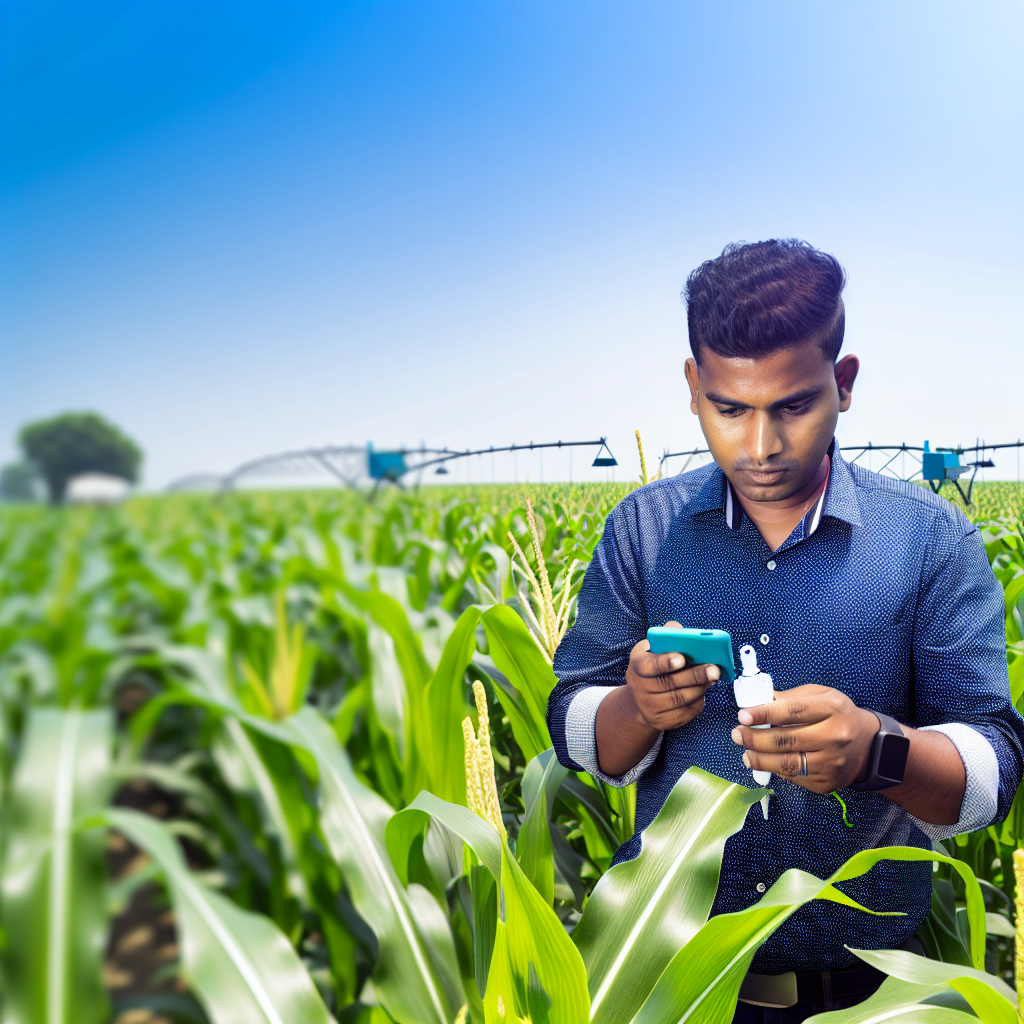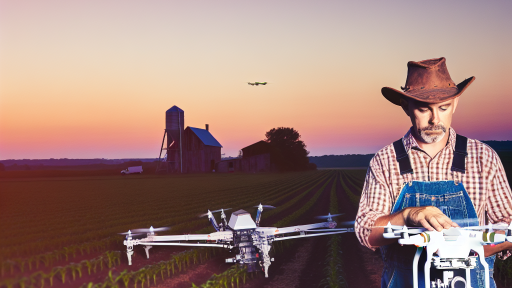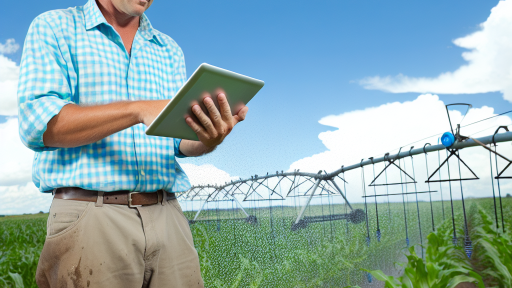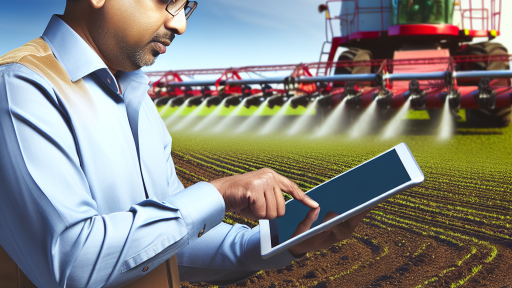Introduction to Water Scarcity in Agriculture
Water scarcity poses a significant challenge for agriculture worldwide.
Many regions face declining water resources due to climate change.
Additionally, increasing agricultural demands exacerbate this situation.
Farmers must utilize water more efficiently to sustain productivity.
The Importance of Water in Agriculture
Water is essential for crop growth and development.
It supports photosynthesis and nutrient transport in plants.
Without adequate water, yields can drastically decline.
Consequently, managing water resources effectively is vital.
Impact of Water Scarcity on Food Production
Water scarcity directly affects food security worldwide.
When water is limited, crops suffer from stress and stunted growth.
This situation can lead to increased food prices.
It may also result in higher levels of malnutrition in vulnerable populations.
Adapting to Water Scarcity
Farmers are exploring innovative solutions to combat water scarcity.
One effective strategy involves the adoption of crop monitoring sensors.
These sensors provide real-time data on soil moisture levels.
Transform Your Agribusiness
Unlock your farm's potential with expert advice tailored to your needs. Get actionable steps that drive real results.
Get StartedFurthermore, they help farmers determine optimal irrigation schedules.
Technological Advances in Water Management
Crop monitoring sensors are revolutionizing water usage practices.
They allow for precise irrigation, minimizing water waste.
This technology also promotes sustainable agricultural practices.
By leveraging data analytics, farmers can make informed decisions.
The Future of Agriculture in a Water-Scarce World
Embracing smart technologies will be crucial for future farming.
Farmers must balance water conservation and production efficiency.
In essence, sustainable practices will ensure long-term agricultural success.
Ultimately, addressing water scarcity is essential for global food security.
Overview of Crop Monitoring Sensors and Their Technology
Introduction to Crop Monitoring Sensors
Crop monitoring sensors play a critical role in modern agriculture.
These devices help farmers optimize water use efficiently.
Moreover, they allow for precise monitoring of crop health.
As a result, farmers can make informed decisions.
Types of Crop Monitoring Sensors
Various types of crop monitoring sensors exist on the market today.
These include soil moisture sensors, weather stations, and NDVI sensors.
Soil moisture sensors measure the moisture content of the soil.
Weather stations provide real-time weather data for specific locations.
Furthermore, NDVI sensors assess plant health through infrared imaging.
How Crop Monitoring Sensors Work
Crop monitoring sensors utilize different technologies to gather data.
For instance, soil moisture sensors employ capacitive or resistive technology.
This technology allows them to measure moisture levels accurately.
Weather stations integrate multiple sensors to capture weather variables.
Moreover, NDVI sensors use light reflectance to monitor plant conditions.
The Benefits of Using Crop Monitoring Sensors
Using crop monitoring sensors provides numerous benefits for farmers.
Showcase Your Farming Business
Publish your professional farming services profile on our blog for a one-time fee of $200 and reach a dedicated audience of farmers and agribusiness owners.
Publish Your ProfileThey help conserve water by optimizing irrigation schedules.
Additionally, these sensors enhance crop yield through timely interventions.
Farmers can also reduce operational costs due to improved resource management.
Overall, these devices promote sustainable farming practices.
Recent Advancements in Technology
Recent advancements have made crop monitoring sensors more accessible.
Advancements include the integration of IoT technology and cloud computing.
Consequently, farmers can access real-time data remotely.
Furthermore, data analytics tools provide insights for better decision-making.
These innovations enhance the effectiveness of crop monitoring efforts.
Types of Sensors Used for Monitoring Soil Moisture
Introduction to Soil Moisture Sensors
Soyl moisture sensors play a vital role in modern agriculture.
These devices help farmers manage water usage effectively.
Consequently, they promote sustainable crop growth.
Capacitive Soil Moisture Sensors
Capacitive soil moisture sensors are widely used in agriculture.
They measure soil moisture levels by detecting capacitance changes.
This method provides accurate readings without direct contact with soil.
Additionally, these sensors are known for their durability.
Resistive Soil Moisture Sensors
Resistive soil moisture sensors utilize electrical resistance to measure moisture.
They employ two electrodes inserted into the soil.
As soil moisture increases, resistance decreases.
However, these sensors may corrode over time.
Regular maintenance is essential for accurate readings.
Tensiometers
Tensiometers offer another effective method for measuring soil moisture.
They provide readings based on soil tension and moisture levels.
Farmers can install these devices near root zones.
Moreover, tensiometers provide real-time information.
They are particularly useful in irrigation management.
Hybrid Soil Moisture Sensors
Hybrid sensors combine various technologies for enhanced accuracy.
They typically integrate capacitive and resistive methods.
This results in better performance in diverse soil conditions.
Farmers appreciate their versatility and reliability.
Wireless Soil Moisture Sensors
Wireless soil moisture sensors offer convenience and flexibility.
They transmit data to a central system via radio signals.
This allows for remote monitoring of moisture levels.
Farmers can access data through mobile apps or web platforms.
Consequently, timely decisions on irrigation can be made.
Selecting the Right Sensor
Choosing the appropriate soil moisture sensor is crucial for success.
Farmers must consider soil type, crop needs, and budget.
Further, understanding the sensor’s operation and maintenance needs is essential.
Ultimately, the right choice optimizes water usage in agriculture.
Gain More Insights: Automated Harvesting Techniques Explained
Showcase Your Farming Business
Publish your professional farming services profile on our blog for a one-time fee of $200 and reach a dedicated audience of farmers and agribusiness owners.
Publish Your ProfileBenefits of Implementing Crop Monitoring Sensors for Water Management
Enhanced Water Efficiency
Crop monitoring sensors significantly enhance water efficiency in agriculture.
They provide real-time data on soil moisture levels.
This allows farmers to make informed irrigation decisions.
Consequently, they can avoid over-watering and conserve precious water resources.
Improved Crop Health
Utilizing monitoring sensors directly contributes to improved crop health.
Farmers receive timely alerts about water stress in crops.
This enables them to take corrective actions quickly.
Healthy crops yield better produce, increasing overall farm productivity.
Cost Savings
Implementing crop monitoring sensors leads to significant cost savings.
Farmers can reduce water bills through optimized irrigation practices.
Additionally, they can minimize labor costs by automating irrigation systems.
This financial efficiency promotes a sustainable farming model.
Data-Driven Decisions
Crop monitoring sensors empower farmers with data-driven decision-making.
They analyze environmental conditions and trends over time.
This data informs future planting and irrigation strategies.
As a result, farmers can adapt more effectively to climate variability.
Environmental Protection
Implementing these sensors promotes environmental protection.
They help reduce the runoff of excess fertilizers and pesticides.
This minimizes negative effects on local water bodies and ecosystems.
Moreover, it supports sustainable agricultural practices.
Uncover the Details: Integrating IoT in Precision Farming Operations
Integrating Sensor Data with Irrigation Systems for Efficiency
Importance of Sensor Data
Sensor data enhances irrigation decision-making processes.
It provides real-time information on soil moisture levels.
Additionally, it helps monitor climate conditions affecting crops.
Farmers can use this data to optimize water usage.
Moreover, timely insights can lead to improved crop yields.
Types of Crop Monitoring Sensors
Diverse sensors are available for crop monitoring.
Soil moisture sensors measure the water content in the soil.
Temperature sensors track temperature changes in the environment.
Light sensors monitor the amount of sunlight crops receive.
Each type plays a significant role in maximizing efficiency.
Connecting Sensors to Irrigation Systems
Linking sensors to irrigation systems offers several benefits.
This connection allows for automated irrigation responses.
For instance, systems can adjust watering schedules based on moisture levels.
Furthermore, integration minimizes water waste significantly.
Real-time adjustments ensure crops receive optimal hydration.
Benefits of Integration
Integrating sensor data with irrigation systems leads to effective water management.
This approach increases resource efficiency on farms.
Additionally, it reduces labor costs associated with manual monitoring.
Farmers can also achieve higher productivity levels.
Showcase Your Farming Business
Publish your professional farming services profile on our blog for a one-time fee of $200 and reach a dedicated audience of farmers and agribusiness owners.
Publish Your ProfileUltimately, it supports sustainable agricultural practices.
Case Studies of Success
Many farms have successfully adopted sensor and irrigation integrations.
For example, Green Valley Farms implemented smart irrigation technology.
They reported a 30% reduction in water usage within the first year.
Likewise, Riverbend Agriculture improved crop yields by 25% through integration.
These success stories demonstrate the effectiveness of this approach.
See Related Content: Cost Benefits of Adopting Precision Agriculture

Case Studies: Successful Implementation of Sensors in Various Crops
Row Crop Farming
Row crop farmers have embraced sensor technology for irrigation optimization.
For instance, the Johnson Family Farms in Nebraska implemented soil moisture sensors.
This system allowed them to monitor moisture levels in real-time.
Consequently, they reduced their water usage by 30% without sacrificing crop yield.
Additionally, sensors provided insights leading to better crop health management.
Fruit and Vegetable Production
Fruit and vegetable growers have also benefited from crop monitoring sensors.
Green Farms in California installed a network of humidity and temperature sensors.
This network helps them monitor conditions across their diverse crops.
As a result, they achieved a 25% decrease in water waste.
Moreover, the sensors assisted in producing higher-quality fruits and vegetables.
Vineyard Management
Vineyards have discovered immense benefits through the use of monitoring technologies.
Sunny Ridge Vineyard adopted advanced sensor systems for vine health monitoring.
This approach ensures optimal watering schedules tailored to specific grape varieties.
In turn, they improved grape quality and flavor profiles significantly.
Harvests increased by 15% thanks to these targeted interventions.
Conventional vs. Organic Farming
Both conventional and organic farms are enhancing their practices with sensors.
Green Pastures Organic Farm integrated soil sensors for effective irrigation management.
This implementation resulted in improved resource efficiency and crop performance.
Meanwhile, conventional farms like Clear Field Farms are using similar technologies.
They focus on maximizing output while conserving precious water resources.
Future Implications of Sensor Technology
The success stories of sensor implementation highlight a significant trend.
The future of agriculture looks increasingly digital and data-driven.
Farmers are beginning to understand the value of precise measurements.
In turn, this knowledge leads to better decision-making and resource management.
Furthermore, widespread adoption may contribute to sustainability goals in agriculture.
Discover More: Enhance Precision Farming with Sensor Data
Challenges and Limitations of Crop Monitoring Sensors in Field Use
Environmental Factors
Certain environmental conditions can affect sensor performance.
For example, heavy rainfall can damage devices.
Additionally, extreme temperatures may impact accuracy.
Moreover, soil moisture levels can fluctuate unexpectedly.
This variability can lead to inconsistent data reporting.
Cost and Maintenance
Implementing crop monitoring sensors can be costly.
Farmers often face high initial investment requirements.
Showcase Your Farming Business
Publish your professional farming services profile on our blog for a one-time fee of $200 and reach a dedicated audience of farmers and agribusiness owners.
Publish Your ProfileFurthermore, ongoing maintenance can strain budgets.
Regular calibration may demand additional resources.
Additionally, some sensors require specialized technicians for repairs.
Technological Limitations
Some sensors lack compatibility with existing farm technologies.
This lack of integration can hinder data utilization.
Moreover, calibration issues can arise from user errors.
Consequently, data accuracy may be compromised.
Additionally, sensor systems can experience connectivity problems.
User Training and Awareness
Farmers may require extensive training to operate sensors effectively.
Without proper knowledge, they may misinterpret data.
Furthermore, many farmers remain unaware of new technologies.
This gap can lead to underutilization of available tools.
As a result, the full potential of crop monitoring remains untapped.
Data Management and Analysis
Handling large volumes of data can overwhelm farmers.
Moreover, improper data management can lead to lost insights.
Farmers may struggle to translate data into actionable tasks.
Consequently, this issue may hinder informed decision-making.
Efficient software solutions are often necessary for effective analysis.
Future Trends in Sensor Technology and Water Management in Agriculture
Advancements in Sensor Design
New sensor technologies are emerging to enhance agricultural practices.
These innovations focus on real-time data collection for improved efficiency.
Moreover, lightweight sensors offer farmers easy deployment across fields.
Advanced materials increase sensor durability in harsh environments.
As a result, farmers can rely on these tools for long-term use.
Integration with IoT
Integration with the Internet of Things (IoT) transforms traditional farming.
Sensors connect to online platforms, providing instant access to data.
This connectivity streamlines water management practices significantly.
Farmers can monitor soil moisture levels efficiently from any location.
Consequently, timely irrigation decisions lead to better resource management.
Data Analytics for Decision Making
Data analytics enhances the effectiveness of sensor technologies.
Advanced algorithms analyze vast amounts of agricultural data.
This analysis allows for predictive modeling and trend identification.
Farmers benefit from actionable insights derived from this data.
Ultimately, informed decisions optimize water use and crop yields.
Environmental and Economic Impact
Improving water management through sensors yields significant environmental benefits.
Efficient water use conserves vital resources in regions facing drought.
Additionally, reduced water usage lowers operational costs for farmers.
These economic benefits encourage sustainable farming practices.
Thus, sensor technologies become a crucial component of modern agriculture.
Future Collaborations and Innovations
Collaboration between tech companies and agricultural experts drives innovation.
These partnerships allow for tailored solutions that fit farmers’ needs.
Showcase Your Farming Business
Publish your professional farming services profile on our blog for a one-time fee of $200 and reach a dedicated audience of farmers and agribusiness owners.
Publish Your ProfileLooking ahead, emerging concepts like machine learning will enhance sensors.
These advancements will provide even greater insights into crop health.
The future of agriculture depends on continuous technological evolution.
Additional Resources
NASA Strengthens Our Resilience to Drought
Guo Crop Ecophysiology & Precision Agriculture Lab | Research …




